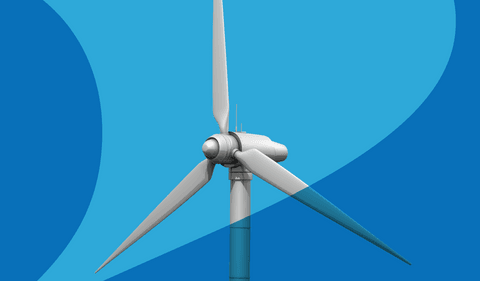The EMA commissioned the Committee over a year ago to “deliberate on the long-term future2” of Singapore’s energy sector, examine long-term trends that would impact it and, ultimately, guide the planning of Singapore’s future energy system3. The Committee has identified a number of strategies that aid Singapore’s power sector in achieving net-zero by 2050 (these are discussed in greater detail below) but noted that the entire energy value chain would have to undergo “transformational changes” in order to do so, and acknowledge that challenges lay ahead due to uncertainties such as “geopolitical trends and technological advancements.4”
The Role of Hydrogen
In a previous article (Energy in ASEAN: Singapore and Hydrogen), we highlighted that, while Singapore had not yet released a national strategy, it was moving forward with investments in the hydrogen space. With the release of the Report, it now appears that hydrogen is set to become a key component in Singapore’s strategy to achieving net-zero. The Report sets out nine strategies (discussed in greater detail below) that could be implemented by Singapore in order to “position itself for the upcoming transition and achieve its energy aspiration,5” focused on three principles: supply, demand and grid. One of the strategies proposed by the Committee is to “develop the use of low-carbon hydrogen for power generation.6”
The Report sets out three potential energy scenarios for 2050:
- Clean Energy Renaissance – The world rallies together against climate change pursuing developments in technology and concerted collective action to manage demand growth. Energy and digital technologies developed rapidly, while strong global cooperation continues through the next three decades. Under these circumstances, Singapore decarbonises smoothly and achieves a diversified supply mix.
- Climate Action Bloc – Countries band together for climate action in a supportive geopolitical environment that favours global solutions but technology advancement is slow, particularly in the field of energy technologies. Singapore arrives at 2050 with electricity imports as a mainstay source of supply while waiting for low carbon technologies to mature.
- Emergent Technology Trailblazer – A world that is fragmented geopolitically while technology development accelerates closer to 2050. Under these circumstances, Singapore makes proactive investments in new technologies to decarbonise and banks on hydrogen as its main source of supply7.
In these scenarios, it is envisaged that low-carbon hydrogen could account from as little as 10 per cent (in the Climate Action Bloc scenario) to as much as 60 per cent (in the Emergent Technology Trailblazer scenario) of Singapore’s energy supply mix8. The Report states that, in the medium to long term, low-carbon hydrogen will be key to the decarbonisation of Singapore’s power sector as it can, potentially, play a major role in the future supply mix9. In navigating a pathway towards net-zero, the Report recommends that Singapore develop a national hydrogen strategy (including for power generation), to provide clarity for companies and investors. Moreover, it is recommended that Singapore identifies and aggregates demand for hydrogen in different sectors (e.g. industrial, maritime, transport and power) and establish a clear pathway for the adoption of hydrogen for power generation. The Committee believes that the announcement of a national low-carbon hydrogen target would serve as a clear signal to potential investors in Singapore’s emerging hydrogen sector, as well as helping to build demand in the international market10. The Report also states that Singapore should work closely with local companies and international partners to develop a “robust and competitive” hydrogen supply chain, as well as developing technical and regulatory frameworks to facilitate large-scale adoption, investing in research and development (R&D) focused on hydrogen technologies and preparing infrastructure at an early stage11.
Finally, it is worth noting that the Committee is of the view that Singapore should focus solely on the utilization of low-carbon hydrogen, including “blue” hydrogen (i.e. hydrogen produced using fossil fuels coupled with carbon capture utilisation and storage (CCUS)) (as well as “green”), recognising that hydrogen produced from fossil fuels may be necessary to help accelerate the adoption of hydrogen as an energy source in an affordable manner12.
As previously highlighted, Singapore has started to take preliminary steps in the development of its hydrogen sector (Energy in ASEAN: Singapore and Hydrogen). It seems likely that the next key milestone for Singapore is the release of a national hydrogen strategy, although the timing for the release of such a policy remains uncertain.
Other Strategies
In addition to proposing the development of the low-carbon hydrogen sector, the Report sets out eight other strategies that Singapore could implement in order drive its net-zero ambition, namely:
- Pursue the adoption of electricity imports.
- Maximise solar deployment and use energy storage systems to manage solar intermittency.
- Pre-position Singapore for new low-carbon supply alternatives.
- Leverage carbon markets to address residual and hard-to-abate carbon.
- Create a multi-layered grid to manage the growth of distributed energy resources (DERs) and improve grid reliability.
- Leverage digital technologies to enhance grid planning and operations.
- Actively manage the growth of energy demand.
- Shape end-user consumption patterns to optimise the power system.
It should be noted that Singapore has already taken steps towards the implementation of some of these strategies. For example, the adoption of electricity imports is already high on the energy agenda in Singapore, with the Minister for Trade and Industry, Gan Kim Yong, announcing, in October 2021, that Singapore intends to import up to 4 gigawatts (GW) of electricity by 2035, accounting for approximately 30 per cent of the country’s supply needs. The first RFP to import and sell approximately 1.2 GW was issued by the EMA in November 2021, with the second (for the remaining supply) expected to be issues in the second quarter of 2022, with a view to commencing electricity imports by 203513.
Singapore’s desire to become a leader in carbon markets has been previously documented (Singapore: COP26 and Creating a Center for Carbon Trading) and it is perhaps no surprise that this space forms part of one of the strategies proposed by the Committee. Interestingly, one of the proposals relating to this particular strategy (i.e. exploring the use of carbon credits for offsetting carbon tax liabilities, to promote the trading and use of carbon credits14) is already on track to be adopted, as detailed in the Singapore 2022 Budget Statement (Singapore Budget 2022: Scaling up Decarbonisation).
The Report also highlights Singapore’s relatively limited options for decarbonising its power sector, primarily driven by a lack of space and abundance of natural resources. With this in mind, the Report recommends a strategy of remaining open to all emerging low-carbon alternatives, including technologies such as carbon capture utilisation and storage (CCUS), geothermal, biomethane, nuclear fission small modular reactors (SMRs) and nuclear fusion15.
Implementation
It is expected that, given the heavy level of Government participation on the Committee (which included representation from the Economic Development Board, Ministry of Trade and Industry and National Climate Change Secretariat, amongst an array of other government agencies), most (if not all) of the strategies proposed in the Report will be adopted in some shape or form. Indeed, as we set out above, the government has already taken steps to begin implementing certain of these strategies in advance of the Report being released.
In the context of low-carbon hydrogen, the rate at which the proposed strategy is likely to be implemented will be heavily dependent on the scaling up of production facilities (with Australia and the Middle East being the current front-runners), as well as the emergence of standards for low-carbon hydrogen carriers. As the cost of low-carbon hydrogen continues to drop, with ever increasing investment in R&D for hydrogen-based technologies, there is a strong possibility that it can become a key element of Singapore’s energy mix in the medium term.
In its announcement publishing the Report, the EMA indicated that it would “further study the recommendations in the Committee’s report and announce new developments when ready.16” The full Energy 2050 Committee Report can be accessed here: www.ema.gov.sg/energy-2050-committee-report.aspx.
1 https://www.mof.gov.sg/singaporebudget/budget-2022/budget-statement/d-advance-our-green-transition#emNet-Zeememroemem-Ambitionem.
2 www.ema.gov.sg/energy-2050-committee-report.aspx.
3 https://www.ema.gov.sg/media_release.aspx?news_sid=20220321Ex6rcvZaw8dl.
4 Ibid.
5 Ibid.
6 Ibid.
7 www.ema.gov.sg/energy-2050-committee-report.aspx.
8 https://www.ema.gov.sg/media_release.aspx?news_sid=20220321Ex6rcvZaw8dl.
9 www.ema.gov.sg/energy-2050-committee-report.aspx.
10 Ibid.
11 Ibid.
12 Ibid.
13 https://www.ema.gov.sg/media_release.aspx?news_sid=20211105MaR6EIwItObS.
14 www.ema.gov.sg/energy-2050-committee-report.aspx.
15Ibid.
16 https://www.ema.gov.sg/media_release.aspx?news_sid=20220321Ex6rcvZaw8dl



